Our first video conference between students in the U.S. and China took place in the Highly Immersive Classroom at the Stanford Graduate School of Business (GSB). According to GSB technology specialist Bryan McCann, this session represents the first full-scale class-to-class exchange to make use of the HIC, which has only been open a few months. (While the HIC has been used for smaller events, this is the first time two academic Stanford classes have united.)
The visuals and acoustics were excellent, thanks to four large video screens stitched together and microphones installed at strategic points around the room. It felt like the URBANST 102 students in Beijing were sitting in the same room as our class at Stanford!
The visuals and acoustics were excellent, thanks to four large video screens stitched together and microphones installed at strategic points around the room. It felt like the URBANST 102 students in Beijing were sitting in the same room as our class at Stanford!
| Photo: Students at Stanford University's home campus (left) discuss urban and social development directly with a group in Beijing (center) made up of Stanford students in the Bing Overseas Studies Program and Peking University students. |
| As a warmup activity, students were asked to describe Beijing in three words. The word art here showcases their responses, with more common words appearing larger in the diagram. We then discussed the first assignment of the quarter, Urban Lab #1, where students documented their hometowns. These ranged from small towns in Nebraska and Massachusetts, to a village in Corsica, France, to dense urban centers such as Beijing and Bangkok. | Word art created from student descriptions of Beijing. |
The connection was largely seamless (just a minor hiccup with getting slides to show), and it was exciting for everyone involved to pioneer this technology for use in educational exchanges. Many thanks to the GSB tech team and the hard-working SCPKU staff for helping us set up this joint experience. We look forward to additional trans-Pacific teleconference sessions in coming weeks!
One of the Stanford students based in Bejing later posted this note about his experience in the combined classroom:
One of the Stanford students based in Bejing later posted this note about his experience in the combined classroom:
Image Gallery
Lessons Learned
- Double-check the script/discussion outline with fellow instructors before starting the session. It's worth taking the time so the rest of the session flows smoothly.
- For long sessions, take a break in the middle! Students also appreciate snacks.
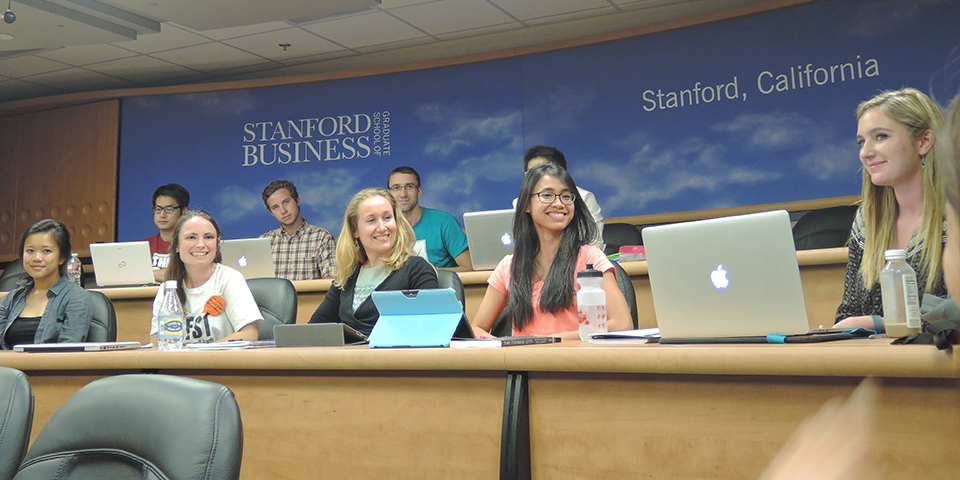
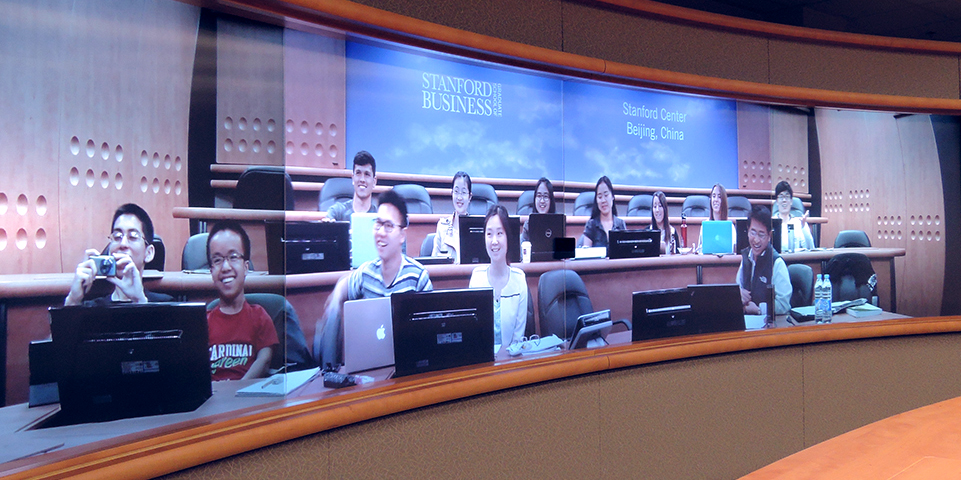
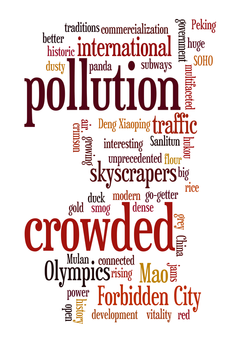
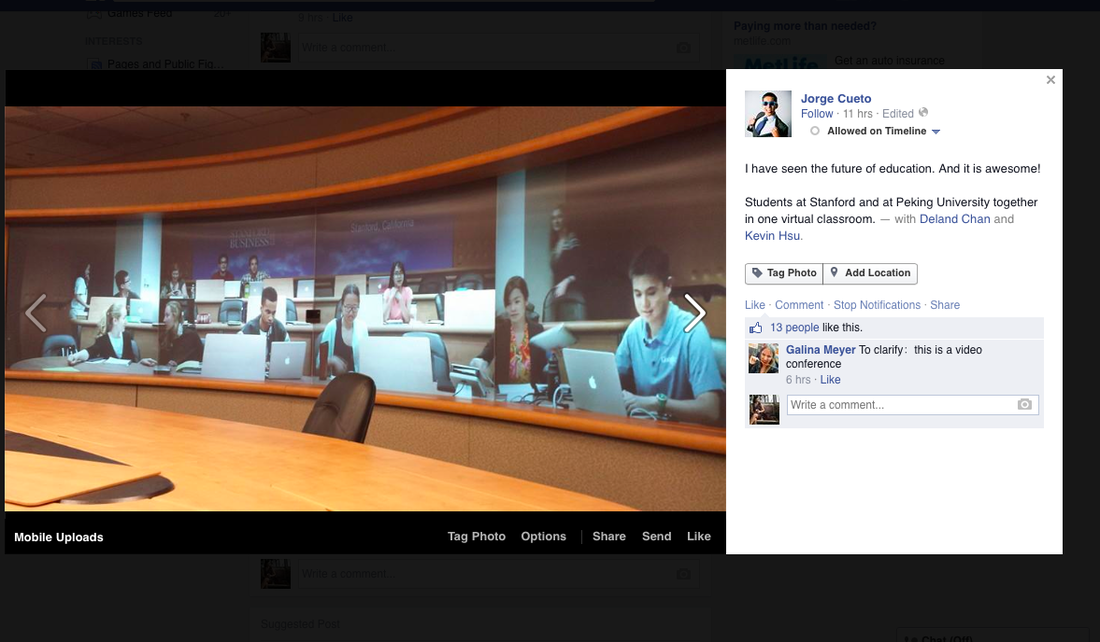
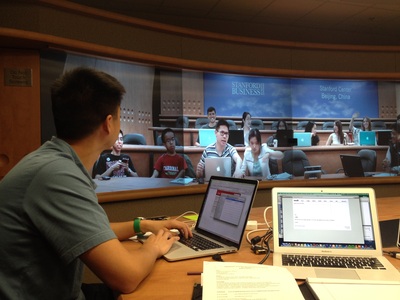
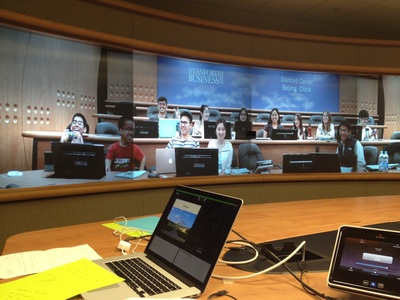
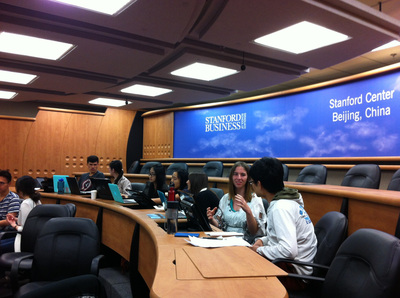
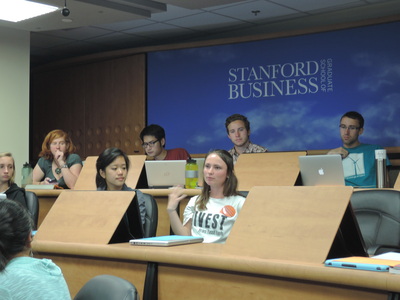
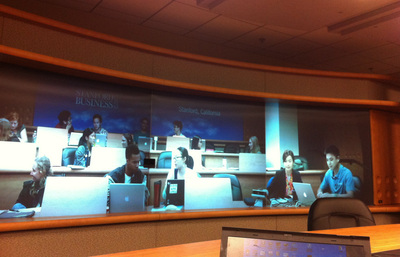
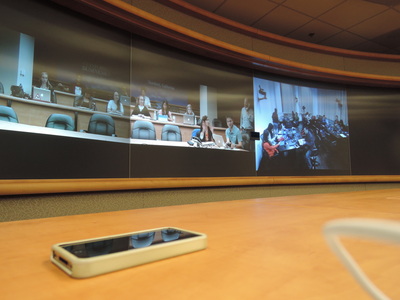

 RSS Feed
RSS Feed
